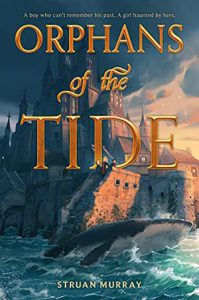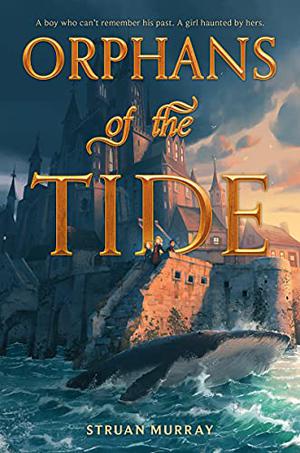 Much like orphan, clock keeper, and thief Hugo Cabret, Ellie Lancaster lives in a world where her survival depends on secrets and anonymity. Although Orphans of the Tide by Struan Murray doesn’t have the Caldecott winning pictures of Brian Selznick’s book, it has a similar protagonist in twelve-year-old Ellie and much of the mystery, charm, and adventure.
Much like orphan, clock keeper, and thief Hugo Cabret, Ellie Lancaster lives in a world where her survival depends on secrets and anonymity. Although Orphans of the Tide by Struan Murray doesn’t have the Caldecott winning pictures of Brian Selznick’s book, it has a similar protagonist in twelve-year-old Ellie and much of the mystery, charm, and adventure.
Ellie is an inventor, mechanic, and engineer who is trying to keep alive the memories of her lost mother and brother. With Anna Stonewall as her best friend, Ellie must save Seth, a boy “born” from a whale whose emotions are connected to the sea. Alone and surrounded by madmen who believe he is the Vessel that harbors the Enemy, Seth will be sacrificed to save the people of The City.
Convinced that Seth is NOT the Vessel, Ellie is helpless against the single-minded Inquisitors. Because Seth will otherwise die, Ellie requests the help of Finn—a mysterious individual with some kind of hold on Ellie. For this favor, Ellie will owe him.
Using fireworks and an explosion, Ellie and Finn manage to help Seth escape. Afraid for her friend’s safety, Anna accuses Ellie of wanting to solve the mystery of Seth so she can show off. Still, Ellie protects Seth for as long as she can, hoping to help him discover his origin story.
In addition to telling a story about people who staunchly adhere to beliefs without critical thought, Orphans of the Tide shares morals about how grief and guilt exploit human weakness. Murray further suggests that we are all vessels for something—whether pain, worry, or concern.
Another message the novel carries is an analogy to an oyster and how it creates a pearl. When something like a grain of sand gets “under our skin,” we humans have a choice: get irritated or create something beautiful. Anna explains the pearl-making process to Seth: “[A pearl] is an oyster’s way of protecting itself. If a tiny parasite gets inside the shell, the oyster builds this shiny coating around it so the parasite can’t hurt it . . . . It takes something horrible and dangerous and turns it into something beautiful” (227).
Ultimately, this is a novel about survival, the value of common sense, and one’s refusal to blindly accept fate. For his debut middle-grade fantasy, Murray writes a tale of myth, magic, and the power of friendship.
- Posted by Donna

